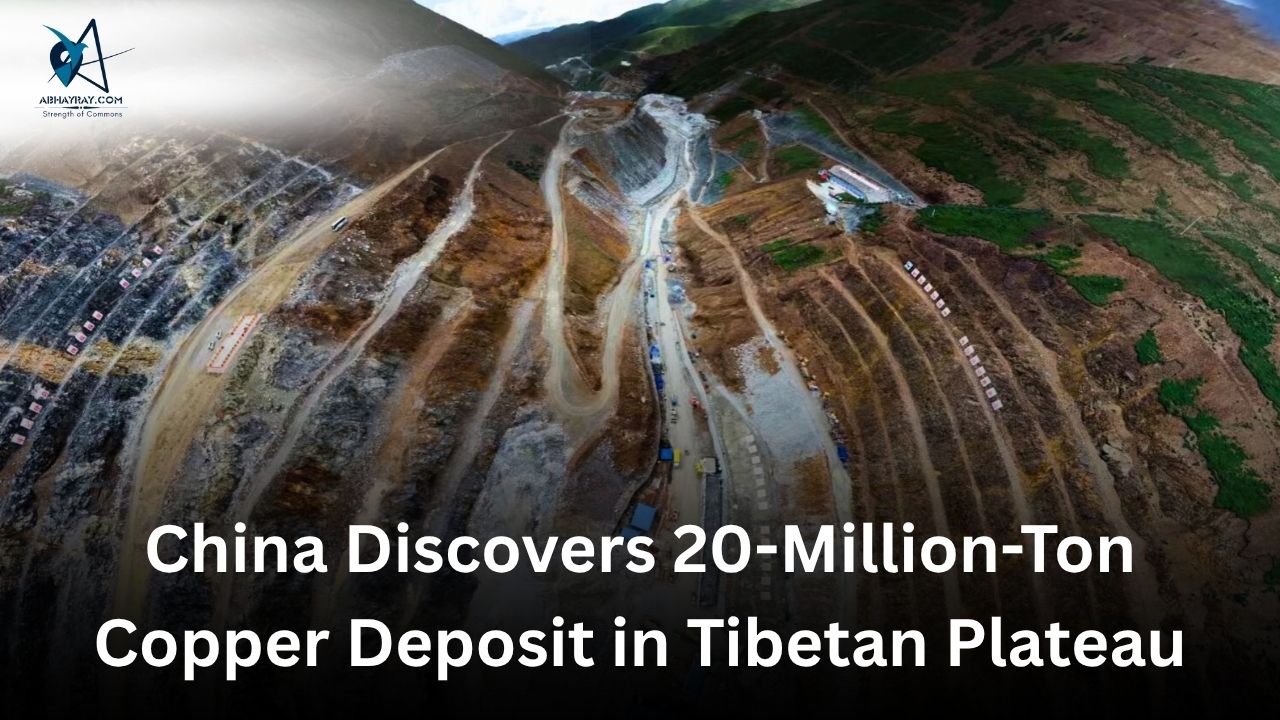Introduction
In an unexpected breakthrough, experts have uncovered a massive copper deposit in China’s Tibetan Plateau, exceeding 20 million tons. The newly identified copper resources are part of a larger potential resource base, which could reach up to 150 million tons. This discovery places the Qinghai-Xizang region at the heart of global copper exploration, with significant geopolitical and economic implications.
A Surprising Discovery in an Unexpected Location
The Qinghai-Xizang region, once considered remote and difficult to access, has become a major focus of copper exploration. Over the past few years, four major copper resource bases Yulong, Duolong, Julong-Jiama, and Xiongcun-Zhunuo have emerged, making the region one of the most promising areas for copper mining globally.
According to Global Times, the main site alone holds over 20 million tons of high-quality copper ore, and neighboring deposits could add up to 150 million tons of copper to the region’s total resource base. This discovery is particularly significant in light of China’s ambitious efforts to secure its mineral resources as part of the country’s 14th Five-Year Plan (2021-2025). The development of these reserves will likely solidify China’s role as a dominant player in the global copper market, with far-reaching effects on supply chains and international trade.
Copper’s Role in the Green Energy Transition
Copper is a critical material in the green energy transition, playing a central role in renewable energy technologies like solar panels, wind turbines, and electric vehicles. A single electric vehicle requires up to four times as much copper as a traditional combustion engine, and the growing demand for electric vehicles is putting pressure on global copper supplies. Experts emphasize that copper’s role is not limited to electric vehicles. The metal is also integral to the expansion of solar and wind energy, which are central to global efforts to combat climate change.
The discovery of such a vast copper deposit in the Tibetan Plateau comes at a time when the demand for this metal is higher than ever. It is expected to play a pivotal role in driving the development of green energy solutions worldwide, making the discovery even more impactful for China’s future energy strategies.
Impact on Global Competition
Mining analysts believe China’s newly identified trove could bolster domestic production. The development will likely reduce reliance on international suppliers and shift negotiations around metal pricing.
Some industry observers warn that concentrated control of this metal will amplify economic sway. Major producers in South America and other regions are watching these changes with growing concern.
Environmental Responsibility
Local advocates voice concerns about potential harm to fragile ecosystems. Companies operating in the plateau plan to explore methods that minimize disruption, which include advanced filtering systems to manage wastewater responsibly.
Over the years, some high-altitude projects in China have tested environmentally friendly techniques. Adopting these approaches for copper extraction may protect local flora and fauna from irreversible damage
Mining Challenges and Technological Innovation
Mining operations in the Tibetan Plateau are not without challenges. The region’s high altitude and harsh climate conditions require specialized technologies and innovative solutions to extract the copper efficiently. To meet these demands, China is developing advanced mining techniques, including autonomous drones and specialized drilling robots, to operate in the extreme environment of the plateau.
These technological advancements not only address the logistical challenges posed by the plateau’s altitude but also represent a leap forward in mining practices globally. The use of autonomous equipment could help improve the efficiency and safety of mining operations while reducing environmental impacts. The innovations developed for this project could set new standards for the mining industry worldwide, reshaping the way natural resources are extracted in other remote and challenging locations.
Conclusion
The discovery of over 20 million tons of copper in China’s Tibetan Plateau marks a major turning point in global resource dynamics. Positioned to become a key player in the copper market, China may significantly reduce its reliance on imports while advancing its green energy goals. This vast deposit supports growing demand for electric vehicles and renewable energy infrastructure. However, the project must balance economic gain with environmental stewardship in this ecologically sensitive region. By leveraging cutting-edge mining technologies, China could not only overcome logistical challenges but also set new global standards for responsible and efficient mineral extraction.
GMICapitals.com RaysVeda.com GetMyStartup.com LawCanal.com GetMyIndia.com ZinCob.com Angeltors.com

